Prior to joining the National Air Transportation Association, I spent the better part of a decade traveling the country, providing training in all aspects of aviation fuel quality control (QC) and inspecting airport fuel farms and into-plane refueling equipment. During that time, I started most of my site visits the same way, by looking at the QC Books, three-ring binders that housed all the paper records of fuel quality inspections and test results required of a thorough QC program.
I started with the books because you can tell a lot about an operation by what you find in them. For example, daily records showing sump samples as 1A, clear and bright 365 days a year were an immediate indicator of “pencil whipping,” and a sign that daily tank sumping was likely not getting done.
It also allowed me to check whether documented discrepancies had actually been corrected. Sometimes I found that discrepancies would just “live in the books,” never making their way to those who had the authority and purchasing power to correct them. When I debriefed management after an inspection, they were often surprised to learn of what I had found.
These are just a few examples of the issues FBOs, and other into-plane fuel providers face when relying on a paper-based QC system. With paper, managers can only ensure things are getting done right if they know what to look for and comb through the books themselves, hire dedicated experts they trust to oversee their QC program, or wait until a failed inspection/audit comes across their desk.
There is, however, a better way. NATA’s Fuel Quality Management System (FQMS) has revolutionized QC management with a cloud-based, digital QC suite that completely replaces the paper approach and eliminates the headaches that come with it. FQMS provides company management increased visibility into their QC program with date, time, and location stamping of inspections, as well as real-time reporting of discrepancies as they are generated. With the ability to upload photo documentation of findings directly from the field, maintenance staff see for themselves exactly what the issue is and even track the time they spend repairing it. Our Compliance Sentry technology performs trend analysis, alerting users of potential issues before they become serious problems, and our Maintenance Dashboard provides an easy, clean view of all upcoming monthly, quarterly, and annual inspections, displaying exact deadlines to ensure compliance with the latest revision of the ATA 103.
It is 2021 and time to move beyond paper. Technology has improved nearly every facet of our daily lives, saving us both time and effort. Why is QC one of the last things you are still doing on paper?
Visit our FQMS page at www.nata.aero to learn more and schedule your demo today.






